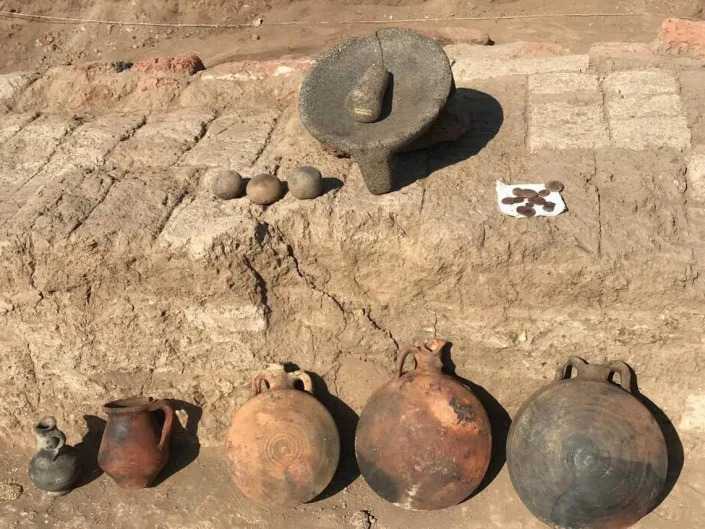Irene Wright
Wed, January 25, 2023
Egyptian archaeologists working on the east bank of the Nile River have discovered what they believe to be a complete residential city from the Roman era, according to a Ministry of Tourism and Antiquities release.
The ruins were found in the city of Luxor in southern Egypt. The city was once the site of the pharaoh capital Thebes during the height of their power from the 16th to 11th centuries B.C., according to Britannica.
The ministry said the discovery was the oldest, and most important, residential city found so far in Luxor. The findings included residential buildings and bathroom towers, dated to the second and third centuries A.D.

Residential buildings and bathroom towers were dated to the second and third centuries A.D.
The archaeologists also found industrial and metal-working workshops and the things created in them. These include pots, water bottles, pottery, grinding tools and Roman coins, both copper and bronze.

Findings included pots, water bottles, grinding tools and Roman coins.
Director general of archaeology Fathi Yassin said in the release that they also found pigeon towers, once used to house birds. There were also pots that may have been used for pigeon nests, a practice that was likely started during the Roman era.
Excavation began on the site in September as part of a series of projects.
Mustafa Waziri, secretary general of the Supreme Council for Archaeology, said in the release that he was happy about the result of the excavation so far, but that more work was needed on the site to unlock more secrets hidden in the ruins.
Google Translate was used to translate the release from the Ministry of Tourism and Antiquities.
No comments:
Post a Comment